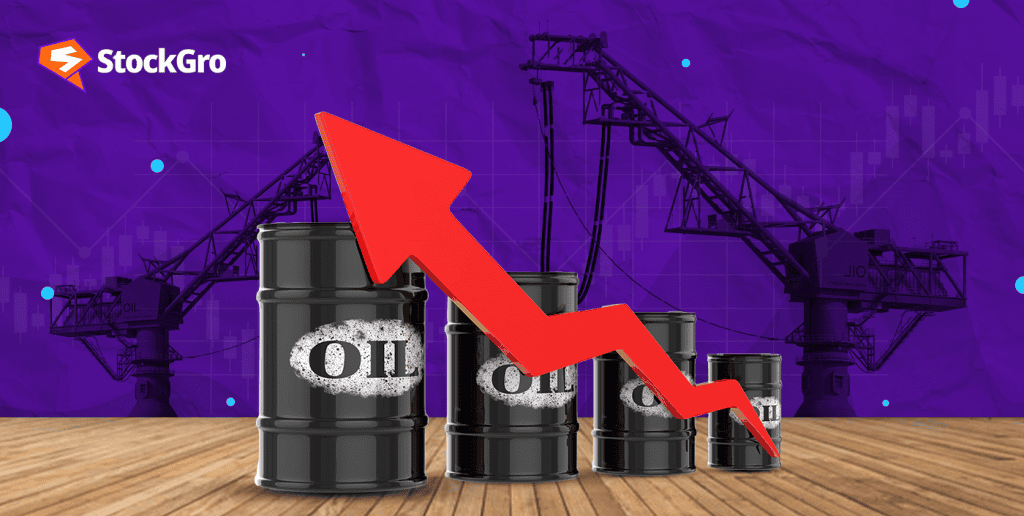
The recent surge in crude oil prices is causing waves in the financial markets, especially for industries that rely heavily on oil-based inputs, such as tyre, paint, and oil marketing companies. As oil prices escalate, companies in these sectors are feeling the heat, affecting stock performance and investor sentiment.
Crude Oil and Its Impact: A Ripple Effect on Multiple Industries
Crude oil is not just about fuel; it’s the lifeblood of many industries. The ripple effect of rising crude prices can be felt across sectors, especially for tyre, paint, and oil companies. These industries are heavily dependent on crude oil for their raw materials, making them vulnerable to fluctuations in oil prices.
Impact on Paint Companies
Paint manufacturers are among the most affected by rising crude oil prices. Crude oil derivatives make up 55-60% of the raw materials used in the production of paint. With a sharp increase in crude prices due to geopolitical tensions in the Middle East, input costs have surged, putting pressure on margins.
- Asian Paints: The leading player in the paint industry, saw its share price drop by 2.7%, falling to ₹3,065. Its market capitalization also slipped below ₹3 lakh crore.
- Berger Paints: Suffered a 4% decline, bringing its stock price down to ₹576.70, losing significant market capitalization.
- Kansai Nerolac: Another major player, saw a dip of nearly 3%, trading at ₹292 on the back of rising crude oil costs.
- Akzo Nobel: Dropped 4.3%, reflecting the wider market sentiment.
Also Read: Kansai Nerolac Paints Q1 results key highlights
Impact on Tyre Companies
The tyre industry, heavily reliant on oil-derived products like synthetic rubber, has also been hit hard by the crude price hike.
- Apollo Tyres, MRF, and JK Tyre & Industries have all seen stock prices dip by up to 3-4%. These companies are feeling the squeeze as the cost of raw materials, including rubber and carbon black, surges.
- Rising crude oil prices drive up production costs, leaving tyre companies with slimmer margins, especially in the face of increasing competition and slower-than-expected demand growth.
You may also like: Top tyre and allied industry stocks to grow your portfolio in 2024
Oil Marketing Companies (OMCs)
While oil and gas producers like ONGC benefit from rising crude prices, oil marketing companies (OMCs) face a much tougher scenario. These companies, including Bharat Petroleum Corporation (BPCL), Hindustan Petroleum Corporation (HPCL), and Indian Oil Corporation (IOC), have seen stock prices tumble.
- BPCL emerged as one of the largest Nifty 50 losers, seeing its stock price decline by up to 4%.
- HPCL followed suit, with its share price dipping by more than 5%.
- Despite a current marketing margin of over ₹10 per litre, analysts warn that if Brent crude prices surge past $80 per barrel, these companies might have to cut retail fuel prices, significantly impacting profitability.
Also read: Fueling India’s growth engine: Evolution and outlook of oil & gas industry
Geopolitical Tensions: A Catalyst for Rising Oil Prices
The recent surge in crude prices is largely driven by rising tensions in the Middle East, particularly the Israel-Iran conflict. On 3rd October, Brent crude prices spiked from $70 to $75 per barrel, with concerns that the situation may escalate further.
- Brent crude futures reached $77.51 per barrel, marking a weekly gain of 7.7%, the highest since February 2023.
- Escalating tensions could keep oil prices elevated, continuing to weigh on industries reliant on crude.
What Does This Mean for Investors?
For investors, the rising oil prices present both opportunities and risks, depending on the sector they’re focused on. While oil producers stand to gain from higher realisations, downstream companies like paint and tyre manufacturers face margin compression.
Opportunities in Oil and Gas
Oil exploration companies like ONGC stand to benefit from the rising prices. ONGC’s stock gained up to 2% in recent trading, making it one of the biggest Nifty 50 gainers. Higher crude oil prices translate into better margins for exploration and production companies, making this an attractive investment in the current environment.
Risks in the Tyre and Paint Sector
For paint and tyre companies, the challenge lies in managing rising input costs without passing them on entirely to consumers. As margins come under pressure, stock prices may remain subdued. Investors with positions in these sectors need to be cautious, especially if crude prices continue to rise.
Will Crude Prices Stabilize Anytime Soon?
Analysts suggest that crude prices may continue to remain volatile in the near future, especially given the geopolitical uncertainties. If the situation escalates further in the Middle East, we could see Brent crude prices climbing above $80 per barrel, which would significantly impact oil marketing companies and other industries dependent on oil-based raw materials.
What Should You Watch Out For?
Here are some key factors investors should monitor:
- Crude Oil Prices: If prices continue to rise, expect more downside pressure on paint and tyre stocks.
- OMC Margins: Pay attention to the marketing margins of oil marketing companies, as they may need to adjust fuel prices, which could hurt profitability.
- Geopolitical Risks: Keep a close eye on developments in the Middle East, as any escalation could further drive up oil prices.
You may also read: Everything you need to know about Crude oil trading in India
What Analysts Are Saying
- Morgan Stanley has downgraded its rating on Berger Paints and Asian Paints, citing rising crude oil costs as a significant risk to profitability. Their target price for Asian Paints is set at ₹2,522, while Berger Paints is expected to hover around ₹497.
- Phillip Capital has a more optimistic outlook for Indigo Paints, a relatively new entrant in the paint industry. The firm projects robust growth for the company, driven by a strong presence in Tier 3 and Tier 4 cities. They have initiated coverage with a target price of ₹1,937.
Conclusion: Navigating the Crude Oil Surge
The impact of rising crude oil prices is evident across several industries, particularly tyre, paint, and oil marketing companies. While oil exploration companies stand to gain, other sectors face tighter margins and declining stock prices. For investors, this is a time to be vigilant, keeping a close watch on both oil prices and geopolitical risks. Those with positions in affected industries may need to reassess their portfolios in light of the evolving situation.

